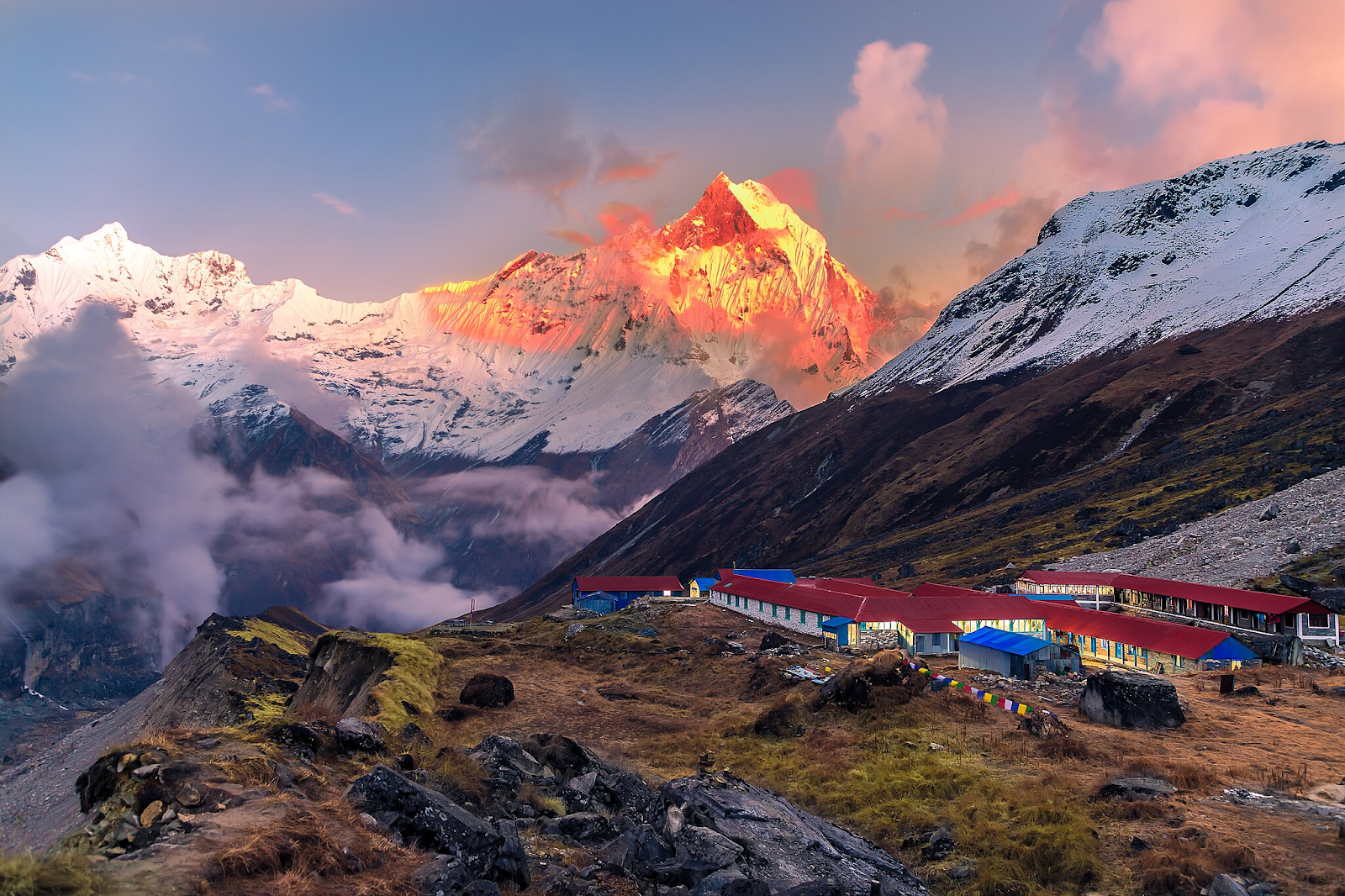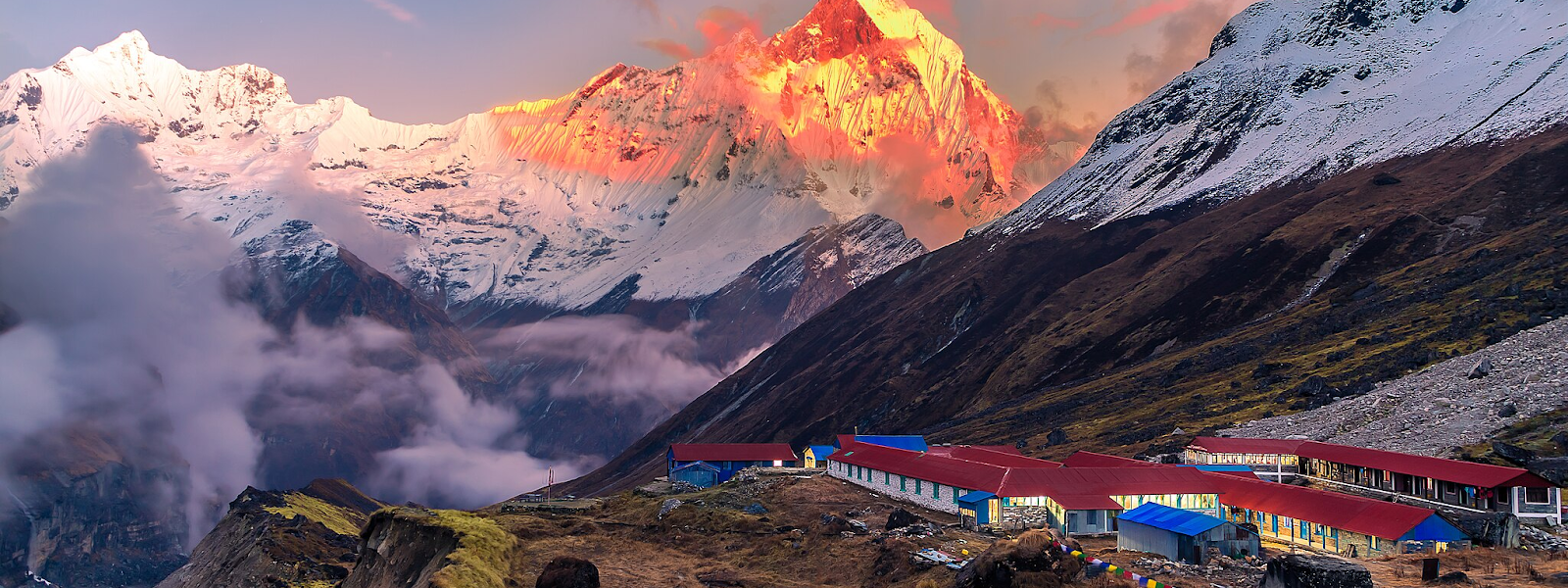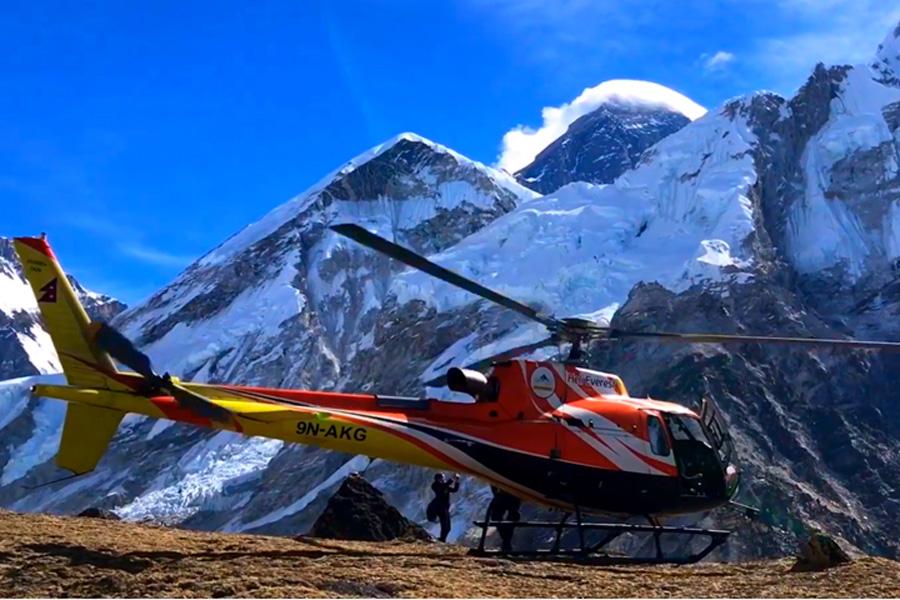The Annapurna Base Camp Trek—often referred to as the ABC trek—is one of Nepal’s most iconic and rewarding trekking experiences. Nestled in the heart of the Annapurna Conservation Area, this trek offers a perfect blend of natural beauty, cultural encounters, and breathtaking mountain views. Reaching a maximum elevation of 4,130 meters, the trail leads trekkers to the foot of Annapurna I (8,091 m), the 10th highest mountain in the world.
This classic trek is ideal for beginners and seasoned hikers alike, offering moderate difficulty, comfortable accommodations, and a variety of landscapes that shift from lush lowlands to high alpine terrain.

Key Points
1. Trek Overview and Duration
The Annapurna Base Camp trek can be completed in 7 to 12 days, depending on the starting point and pace. Most trekkers begin their journey from Pokhara, a scenic lakeside city that serves as a gateway to the Annapurna region.
- Starting Point: Nayapul, Jhinu Danda, or Ghandruk
- Highest Point: Annapurna Base Camp – 4,130 meters (13,550 feet)
- Difficulty: Moderate – suitable for trekkers with a decent level of fitness
The trail passes through charming villages, terraced fields, bamboo forests, and high-altitude pastures, offering a constantly changing backdrop that keeps every day exciting.
2. Stunning Himalayan Scenery
Few treks in the world offer such a close-up view of towering peaks in such a short timeframe. Along the route, trekkers are surrounded by a dramatic amphitheater of Himalayan giants.
Major peaks seen during the trek include:
- Annapurna I (8,091 m)
- Machapuchare (Fishtail, 6,993 m)
- Annapurna South, Hiunchuli, Gangapurna, and Tent Peak
The trek culminates at Annapurna Sanctuary, a natural basin surrounded by a circle of snow-capped mountains—making the base camp one of the most awe-inspiring destinations in the Himalayas.
3. Rich Cultural Encounters
The ABC trail is not just about nature—it’s also a cultural journey through Gurung and Magar villages, where trekkers experience authentic Nepalese hospitality. These communities, known for their contributions to the British Gurkha regiments, have preserved their unique traditions and warm, welcoming spirit.
Cultural highlights include:
- Traditional stone-built houses and guesthouses
- Local customs, dances, and festivals
- Delicious home-cooked Nepali meals and warm “Namaste” greetings
4. Natural Hot Springs and Side Trails
A popular stop on the trek is Jhinu Danda, where trekkers can enjoy natural hot springs by the river—a perfect place to relax sore muscles after long hiking days. Other possible detours include:
- Poon Hill (3,210 m) – for a stunning sunrise view of the Annapurna and Dhaulagiri ranges
- Mardi Himal Trek – a quieter, shorter extension for those with extra time
These options make the Annapurna region incredibly flexible and customizable.
5. Best Seasons for Trekking
The best times to trek to Annapurna Base Camp are:
- Spring (March to May): Rhododendrons bloom, moderate temperatures, clear skies
- Autumn (September to November): Crisp air, excellent visibility, stable weather
Winter (December to February) offers fewer crowds but colder temperatures and potential snow at higher altitudes. Monsoon season (June to August) is less favorable due to rain and leeches but offers lush green scenery for adventurous souls.
6. Accessibility and Permits
One of the trek’s advantages is its easy access from Pokhara, which is a short flight or a scenic 6-8 hour drive from Kathmandu. From Pokhara, a brief drive takes you to the trek’s starting point.
Required permits include:
- Annapurna Conservation Area Permit (ACAP)
- TIMS Card (Trekkers’ Information Management System)
Permits are available through trekking agencies or tourism offices in Kathmandu and Pokhara.
7. Accommodation and Food
Accommodation along the route is available in teahouses, which are family-run lodges offering basic but comfortable rooms and hearty meals. Expect:
- Twin beds with blankets (bring a sleeping bag for colder nights)
- Hot meals like dal bhat, noodles, momos, pancakes, and soups
- Tea, coffee, and even limited Wi-Fi in some villages
Food and lodging become more basic the higher you go, but the experience remains warm and memorable.
Conclusion
The Annapurna Base Camp Trek is a must-do for anyone seeking a manageable yet awe-inspiring Himalayan adventure. With its diverse landscapes, cultural richness, close-up mountain views, and accessible trailhead, it’s one of the most well-rounded treks in Nepal.
Whether you’re hiking through rhododendron forests, soaking in hot springs, or standing at the base of mighty Annapurna I, every step of this journey is filled with wonder. Perfect for solo travelers, groups, or even family treks, the ABC trail promises not only panoramic views but also a deep sense of achievement and connection with the natural world.
For those looking to explore the magic of the Himalayas in a shorter timeframe with big rewards, the Annapurna Base Camp Trek is the perfect choice.





